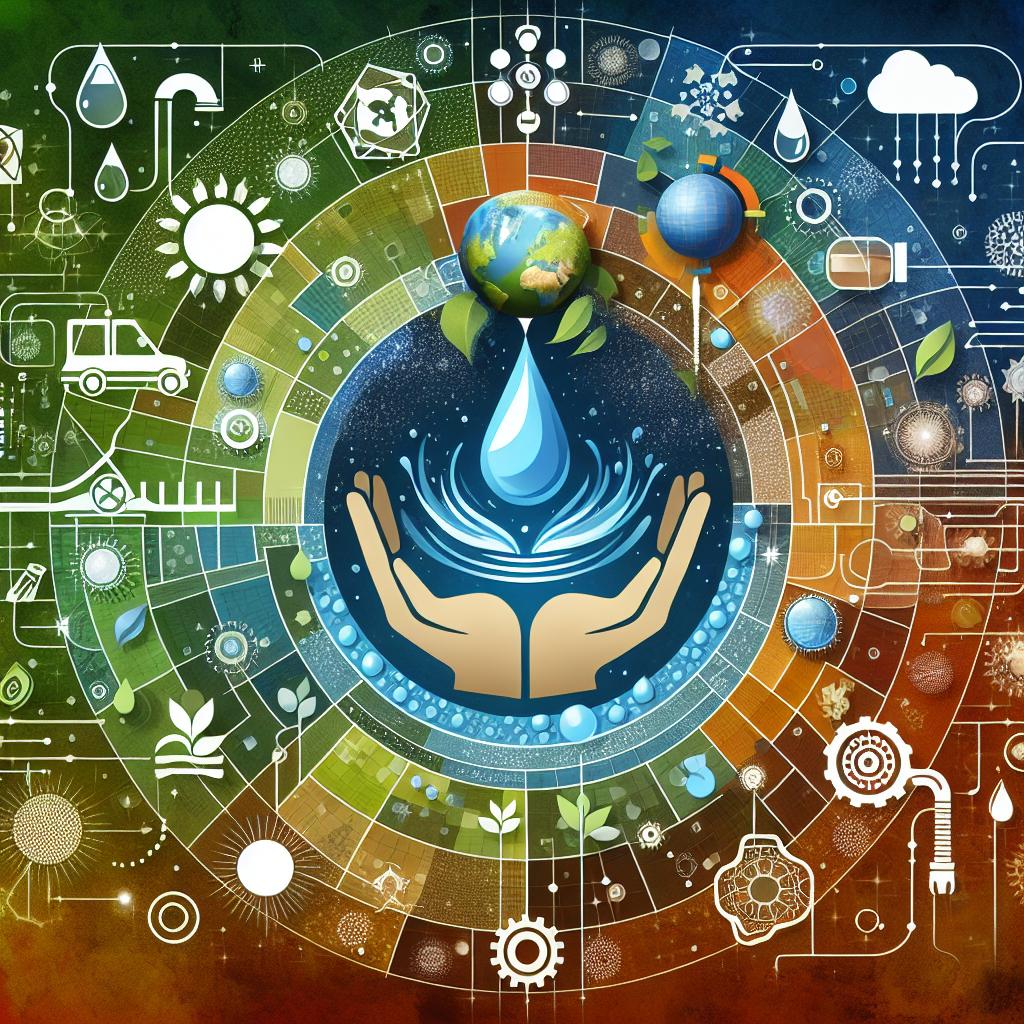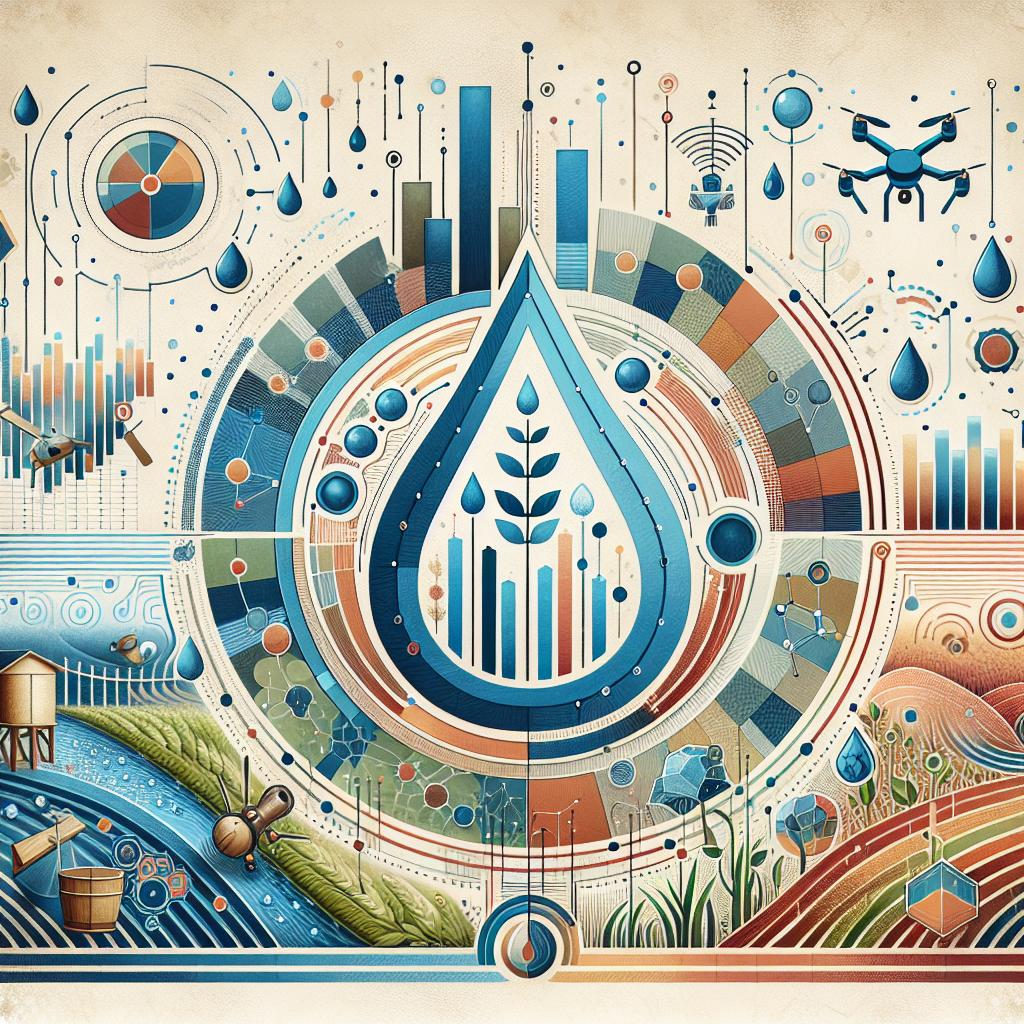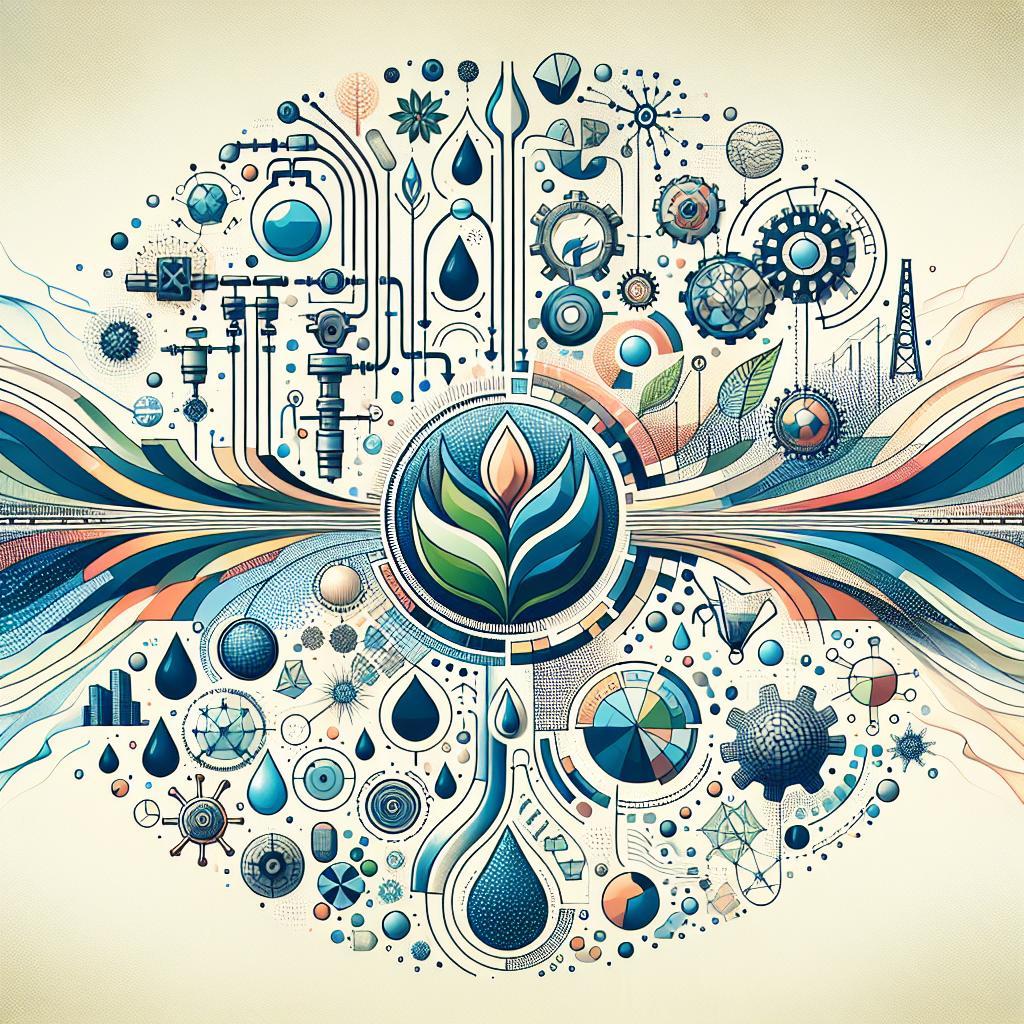This post may contain affiliate links which means I may receive a commission for purchases made through links. Learn more on my Private Policy page.
The Future of Irrigation: Trends and Innovations in the Industry
As the sun rises over lush fields and bountiful gardens, the delicate dance of nature and technology begins. Picture this: a farmer stepping into their field, greeted by smart irrigation systems that whisper the secrets of soil moisture and weather patterns. welcome to the future of irrigation, where tradition meets innovation in a harmonious blend that promises to revolutionize the way we cultivate our crops and nurture our plants. In a world grappling with climate change, water scarcity, and an ever-increasing population, the irrigation industry stands at the forefront of a green revolution, ripe with cutting-edge technologies and sustainable practices. Join us as we explore the dynamic trends reshaping this essential industry—from AI-powered systems to eco-amiable solutions—ensuring that every drop counts and every harvest flourishes. Together, let’s delve into the exciting innovations that are not just watering our land, but also sowing the seeds of a sustainable tomorrow.
Embracing Smart Technology: The Role of IoT in Modern Irrigation
The integration of smart technology in irrigation is revolutionizing how we manage water resources. By utilizing the Internet of Things (IoT), farmers can now access real-time data on soil moisture levels, weather patterns, and crop health. This information empowers them to make informed decisions, significantly enhancing efficiency while minimizing waste. Key benefits of this technology include:
- Automation: Smart sensors trigger irrigation systems automatically, ensuring crops receive optimal water without human intervention.
- Data-Driven Insights: Analyzing data collected from various sensors helps in predicting irrigation needs, thus optimizing water usage.
- Remote Monitoring: Farmers can oversee their fields from anywhere, making it easier to manage irrigation schedules and detect potential issues early.
Moreover, the application of IoT in irrigation systems facilitates a sustainable approach to water management. Using a combination of smart valves, weather stations, and mobile apps, farmers can customize their irrigation practices to align with the unique needs of their crops.The table below summarizes the essential components of a smart irrigation system:
| Component | Function |
|---|---|
| soil Moisture Sensors | Measure moisture levels in the soil to determine irrigation needs. |
| Weather Stations | Provide local weather data to inform irrigation scheduling. |
| Smart Irrigation Controllers | Automate irrigation processes based on real-time data. |
| Mobile Apps | Allow remote control and monitoring of irrigation systems. |

Sustainable Solutions for a Thirsty Planet: Water Conservation Techniques
In the face of increasing global water scarcity, innovative water conservation techniques are more crucial than ever. By harnessing technology and nature-based solutions, we can transform irrigation practices into models of sustainability. Some cutting-edge methods include:
- Drip Irrigation: This technique delivers water directly to the roots of plants, minimizing waste and maximizing efficiency.
- Rainwater Harvesting: Capturing and storing rainwater for irrigation reduces reliance on groundwater and municipal supplies.
- Soil Moisture Sensors: These devices provide real-time data on soil conditions, allowing for precise watering scheduled only when necessary.
- Smart Irrigation Systems: Integrated systems can automate watering schedules based on climate data, ensuring optimal use of resources.
Moreover, communities are increasingly exploring the use of landscape design to enhance water conservation. Techniques such as xeriscaping, which emphasizes drought-resistant plants, and the creation of permeable surfaces can significantly reduce water runoff and evaporation. consider the impact of these approaches:
| Technique | Benefits |
|---|---|
| Xeriscaping | Reduces water usage by 50-75% while promoting biodiversity. |
| Permeable Paving | Allows water to infiltrate, reducing runoff and recharge groundwater. |

Harnessing Renewable energy: Innovative Power Sources for Irrigation Systems
As the global push for sustainability gathers momentum, the integration of renewable energy sources into irrigation systems is changing the way we manage agricultural water use. Innovations such as solar-powered pumps and wind-energy-driven systems are becoming increasingly popular, providing farmers with reliable and eco-friendly options for drawing water.Key benefits of these renewable energy sources include:
- Cost efficiency: Reducing reliance on fossil fuels leads to considerable savings in operational costs.
- Energy Independence: Farmers gain greater control over their energy sources and usage.
- Reduced Carbon Footprint: Utilizing clean energy actively contributes to environmental preservation.
Incorporating biomass energy and micro-hydropower into traditional irrigation systems also opens avenues for innovation. Micro-hydropower taps into local water flow to generate electricity, allowing for immediate on-site energy generation. The integration of these renewable sources can further be enhanced by employing smart technology, which includes sensors and IoT devices to monitor and optimize water usage. A brief comparison of energy sources emphasizes their strengths:
| Energy Source | Advantages | Challenges |
|---|---|---|
| Solar Power | Abundant, Low Maintainance | Initial Setup Cost |
| Wind energy | High Efficiency in Windy Areas | Site Specific |
| Micro-Hydro | Continuous Energy Supply | Site Conditions Required |
| Biomass | Utilizes Waste Material | Space Requirements |

Data-driven Decisions: how Precision Agriculture is transforming Irrigation Management
In today’s agricultural landscape, the integration of data analytics and innovative technology is enabling farmers to make smarter irrigation choices. Through precision agriculture, data collected from various sources, such as soil sensors, weather forecasts, and satellite imagery, can be analyzed to optimize water usage. This data-driven approach allows farmers to understand the unique needs of their crops, minimizing waste and ensuring that water is applied more effectively. By employing advanced irrigation systems that respond to real-time data, farmers can achieve a balance between efficiency and sustainability, ultimately leading to healthier crops and reduced environmental impact.
Farmers are leveraging real-time insights to implement practices that not only conserve water but also enhance crop yields. Key benefits of data-driven irrigation management include:
- Increased Efficiency: Automated systems apply water only when necessary based on precise data, reducing labor and resource costs.
- Adaptive Strategies: Continuous monitoring enables rapid adjustments to irrigation schedules in response to changing weather conditions.
- Improved Crop Health: Targeted irrigation fosters optimal growing conditions, ensuring that plants receive adequate moisture without overwatering.
To better illustrate the impact of these innovations, consider the following table showcasing the effectiveness of traditional versus precision irrigation methods:
| Method | Water Usage (liters/hectare) | Crop Yield (kg/hectare) |
|---|---|---|
| Traditional Irrigation | 9,000 | 2,500 |
| Precision Irrigation | 5,000 | 3,500 |
This data highlights the promising potential for farmers to transition toward more efficient irrigation practices that conserve resources while maximizing productivity. as technology continues to evolve, the agribusiness sector stands at the forefront of a water-saving revolution, driving sustainable practices that ensure the future of food security.
Concluding Remarks
As we stand on the brink of a new era in agriculture, it’s clear that the future of irrigation is not just about watering crops—it’s about nurturing a planet. With innovative technologies like precision irrigation, smart sensors, and the integration of AI, we have the tools to transform our approach to water management in ways we never imagined.
Imagine a world where every drop counts and every field thrives, where farmers can predict droughts and optimize water use with the tap of a finger. This is not just a dream; it’s a rapidly approaching reality made possible by our collective commitment to sustainability and innovation.
So, whether you’re a farmer, a policy maker, or simply a curious reader, let’s embrace these trends and champion the advances that make irrigation smarter, more efficient, and more environmentally friendly. Together,we can cultivate a future that not only feeds the world but also respects our precious resources.
As we turn the page on traditional methods and venture into this exciting new chapter, let’s keep the conversation going. After all, the journey toward a more sustainable agricultural landscape begins with us. Happy farming, and remember: the future is ripe with possibilities!
This post may contain affiliate links which means I may receive a commission for purchases made through links. Learn more on my Private Policy page.

